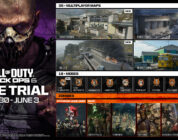After twenty years, Danny Boyle has returned to the zombie-infested landscape that made him a household name. 28 Years Later proves that British filmmaking, when firing on all cylinders, can create something uniquely powerful that Hollywood simply cannot replicate—a horror film with genuine heart, authentic characters, and that distinctly British sensibility that finds humanity in the most inhumane circumstances.
Where American zombie films often focus on firepower and explosions, Boyle’s latest offering does something quintessentially British: it centers the story on family, community, and the quiet resilience that has defined British character for centuries. Set on Holy Island in Northumberland—a location that couldn’t be more perfectly British if it tried—the film creates an isolated community that feels authentic rather than constructed.
The choice to move away from London (the setting of the previous films) to the rugged beauty of the Scottish Highlands and Northumberland coast is a nice change of pace. This isn’t just zombie Britain; it’s rural zombie Britain, where communities have rebuilt themselves around ancient rhythms of tides, seasons, and survival. The causeway that connects Holy Island to the mainland only at low tide becomes a brilliant metaphor for Britain’s relationship with the wider world—connected yet separate, accessible yet protected.
So, what’s it about? Well, as the title suggests, it’s 28 years since the ‘rage’ virus infected Britain. It’s been beaten back by the world, and is only in Britain, which is now cut off from the rest of the world under a strict quarantine. Survivors dot the landscape, scraping out a life in a hostile landscape. The village on Holy Island is mostly safe if all its inhabitants follow strict rules. But there are still people alive on mainland Britain, and some WEIRD things have been happening for almost 30 years. The story focuses on Spike, a boy who is coming of age in the post-infected world (I should make a pedantic point – that the infected are not zombies, and are, in fact, alive). A rite of passage is for the young boys to go to the mainland and learn how to hunt the infected.
Jodie Comer delivers a moving performance as Isla, a mother slowly losing her grip on reality. Comer, who has proven herself equally adept at comedy (Killing Eve) and drama. Her scenes with young Alfie Williams are heartbreaking in their tenderness.
Aaron Taylor-Johnson as Jamie showcases the kind of understated masculinity that British actors do so well—he’s protective without being macho, loving without being sentimental. His relationship with his son Spike forms the emotional core of the film’s first act, and Taylor-Johnson brings the kind of authentic father-son dynamic that American films often struggle to capture.
But it’s Alfie Williams as 12-year-old Spike who truly steals the show. British cinema has always excelled at working with young actors (think of the kids in Billy Elliot or This Is England), and Williams continues that tradition. He avoids the precociousness that often plagues child performances in American films, instead delivering something raw and real.
Ralph Fiennes appears as the mysterious Dr. Kelson, bringing his classical training to bear on what could have been a thankless role. Fiennes, always at his best when playing characters with hidden depths, creates a figure who is part mad scientist, part philosopher, and entirely compelling.
Shot entirely on iPhone 15 Pro Max cameras—a decision that sounds gimmicky but is the evolution of the original film, which was one of the first shot digitally on handheld cameras—28 Years Later achieves a visual style that’s both intimate and epic. The cinematography captures the otherworldly beauty of post-apocalyptic Britain in ways that make you fall in love with the landscape all over again. From the misty highlands to the bone-strewn beaches, every frame feels distinctly British in its appreciation for natural beauty, even in the midst of horror. Very light on the special effects, this film shows us what Britain would look like if it had been untouched and rotting for 30 years. It’s very strange to see a world where Britain was permanently stranded in 2002.
Danny Boyle’s direction remains as kinetic and visually inventive as ever, but there’s a maturity here that wasn’t present in the original 28 Days Later. The famous “zombie cam” is still present, but it’s balanced with moments of genuine stillness and beauty.
When this sequel was announced, I was skeptical they would find an interesting story. The less said about 28 months later, the better. But they found a compelling and moving story. I’m looking forward to future additions to this franchise (they ended it clearly this setting up).
At its heart, 28 Years Later is a coming-of-age story dressed up as a horror film. Spike’s journey from protected child to young adult forced to confront harsh realities is handled with the kind of sensitivity British filmmakers bring to such stories. Think of Kes or This Is England—films that understand that growing up in Britain often means confronting uncomfortable truths about the world you’re inheriting.
The film also demonstrates that British stories don’t need to be “Americanized” to find global audiences. The specifically British elements—the locations, the humor, the character types, the social dynamics—are what make it special, not what hold it back. I’m happy to see that it was a relative hit at the box office here in the USA.
For Anglophiles and British culture enthusiasts, 28 Years Later is essential viewing.
I give it 8 out of 10 phone boxes.
Free British Weekly Newsletter
A Little Bit of Britain In Your Inbox Weekly. Sign-up for our free weekly British newsletter. Sent every Wednesday with the latest news from Britain!





